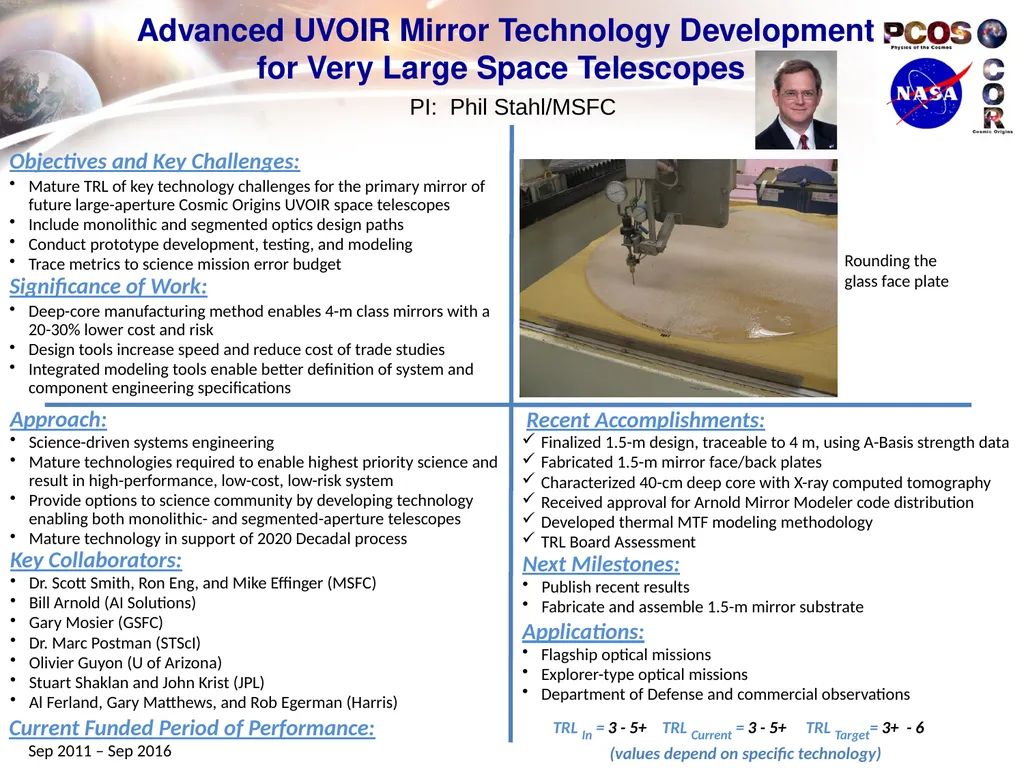
Author : phoebe-click | Published Date : 2025-05-16
Description: Advanced UVOIR Mirror Technology Development for Very Large Space Telescopes PI: Phil StahlMSFC TRL In 3 - 5 TRL Current 3 - 5 TRL Target 3 - 6 (values depend on specific technology) Objectives and Key Challenges: Mature TRL of keyDownload Presentation The PPT/PDF document "" is the property of its rightful owner. Permission is granted to download and print the materials on this website for personal, non-commercial use only, and to display it on your personal computer provided you do not modify the materials and that you retain all copyright notices contained in the materials. By downloading content from our website, you accept the terms of this agreement.
Here is the link to download the presentation.
"Advanced UVOIR Mirror Technology Development for"The content belongs to its owner. You may download and print it for personal use, without modification, and keep all copyright notices. By downloading, you agree to these terms.













